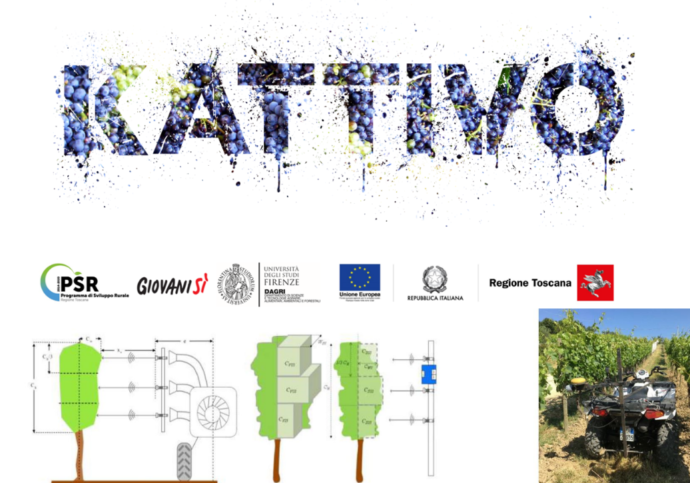The KATTIVO project aims to develop a technological kit that, applied to sprayers, can vary irrorations based on the canopy volume. The project involves the use of an innovative ultrasonic sensor capable of detecting the thickness and density of the vine canopy. This sensor will be able to evaluate, through an algorithm, the canopy volume to vary in real-time the phytosanitary treatments. This innovation will be configured to be operative in two different types of airblast sprayers traditionally used in viticulture. Thanks to this solution, the pollutants released into the environment and the waste of resources (e.g. water, plant products, fuel) during the phytosanitary phases will be reduced.
KATTIVO has a duration of 32 months (2019 – 2021), and it involves two Tuscan wine-farms (Tenute Ruffino and San Felice), located in hilly environments; two research organisations (CREA-VE and DAGRI), they are in charge of monitoring characteristics of the vine canopy, the phytosanitary treatments effectiveness, the quality-quantity analysis of sprays deposition and the economic analysis of this technological innovation introduction; a technical assistance and a training agency (ERATA) that it has the task of providing for the dissemination of information and training activities on the themes of the project.
In the first year of the project, the ultrasonic sensor has been tested in the two wine-farms vineyards to calibrate the technologies and to record data about vines thickness and density. Moreover, dimensional characteristics of the vine canopy both manually and with LIDAR technology are recorded to correlate with data provided by the ultrasonic sensor.
In this second year, the partners are mainly focusing on the machine side, i.e. to design and build the software and hardware connections between sensor and sprayers. Furthermore, the research organisations are continuing to record data about vine canopy and to quantify the product, used in the various vegetative phases, for crop protection.

